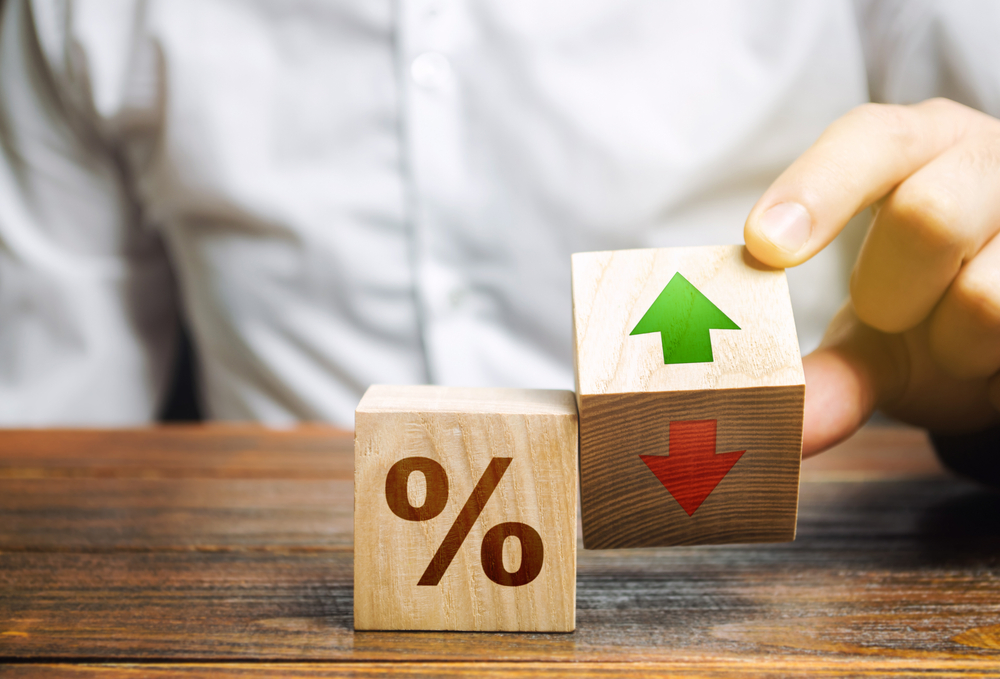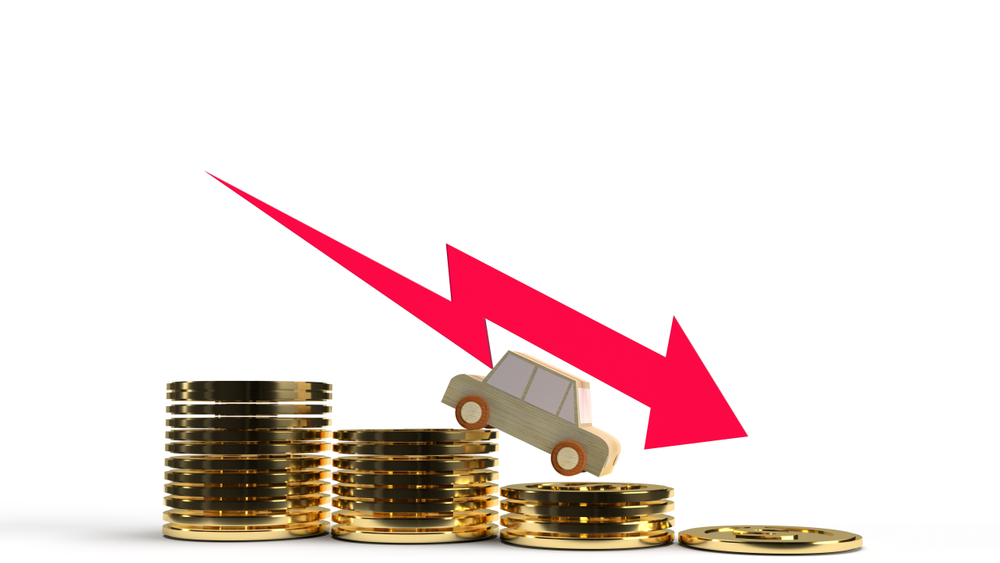How Much Should I Put Down on a Car?
Some car dealerships might require a very minimal or no down payment when purchasing a new or used car. Often, though, buyers try to allocate a down payment to offset the price of the new vehicle. Some buyers combine a down payment with a trade-in value to further decrease the purchase price.
New buyers might wonder, though: How much should I put down on a car? Experts have recommendations related to down payment amount, but buyers also need to know the value of their down payment. The benefits of a down payment include:
- Possibly accessing a lower interest rate for financing
- Paying less interest over time
- Offsetting the impact of depreciation
- Lowering the purchase price and possibly opting for a shorter loan term

How Much Should You Put Down on a Car?
Car buyers should opt for a down payment that fits into their budget. Food or housing costs shouldn’t be in jeopardy because of a down payment, and car buyers need to review their budget to find the down payment that works best for their financial situation.
What do the experts recommend as an ideal down payment amount? Nerdwallet recommends that car buyers try to allocate 20 percent of the purchase price of a new car for the down payment. The site recommends putting 10 percent down for a used car. Other experts advise 10 percent down on a new car purchase.
How is a Down Payment Beneficial to Buyers?
A down payment for a car might have numerous benefits for buyers. In some cases, dealership financing deals (like 0 percent interest loans) could require a down payment. The biggest benefit of a down payment is that it decreases the purchase price of the vehicle. Here’s why that’s important.

A Down Payment Could Lead to Lower Interest Rates
When a car buyer offers a down payment for a vehicle, it decreases the price of the vehicle and it also decreases the amount of financing the buyer needs (if they require financing). The down payment reduces some of the risk for the lender.
If a car buyer has a decent credit score and allocates 20 percent of the purchase price for a down payment, this could increase the borrower’s credit worthiness. A down payment might lead to lower interest rates for financing. However, this isn’t the case for all buyers or borrowers.
Pay Less Interest Over Time
Even if a down payment doesn’t lead to a lower interest rate, it could help buyers pay less in interest over the course of their loan. Again, a down payment decreases the purchase price of the car. This means that interest is applied to a lower overall purchase price. In addition, Investopedia explains that monthly payments also might be lower, too.
Buyers might be surprised at how the price of interest stacks up over time. Nerdwallet offers a car payment calculator that buyers can use to estimate their monthly loan payments. The tool also can help buyers understand how the costs of interest change with each percentile increase.

Offset the Cost of Depreciation
The value of a new car depreciates between nine percent and 11 percent once buyers drive it off the dealership lot. In the first few years of ownership, the vehicle will lose more value—60 percent over the course of five years.
A down payment can help lessen the impact of depreciation. While the car will still depreciate, making a down payment will essentially help offset the loss of value. A down payment also could mean the difference between having a car with a little bit of equity and a car that’s underwater (worth less than the loan balance).
A 20 percent down payment for a new car could help pay for the vehicle’s depreciation during that first year and keep a buyer from being upside down on their loan.
Opt for a Shorter Loan Term
While a down payment can help a buyer pay less interest and help reduce monthly payments on the loan, buyers might find another added benefit. When a buyer offers a down payment—perhaps a substantial down payment—the cost of the vehicle could decrease enough to allow the buyer to choose a shorter loan term.
The buyer might pay more per month but could pay off the loan in less time. A shorter loan term means that the buyer would own the car outright sooner.
While shorter loans aren’t an option for all buyers, a larger down payment could provide enough of a price reduction for the vehicle that the shorter term becomes feasible.
Combining a Trade-In with a Down Payment
Investopedia recommends that buyers offer a down payment versus just a trade-in. This is due to the fact that some car owners might receive less than the car is actually worth when offering it up as a trade-in.
However, a car buyer could combine a trade-in with a down payment. This combination could help further offset the cost of the new vehicle. While dealerships could allow the trade-in to serve as the down payment, buyers can add additional cash to the deal to help lower that purchase price.
One issue that car buyers could have with a trade-in is if the car is worth less than an outstanding loan value. If the trade-in is underwater, a dealership could add this amount to a new loan. The problem with adding the outstanding balance to the new car is that it perpetuates a cycle of negative equity.
Adding a previous loan balance to a new car purchase would cause the new car to be financed for more than its true value. What are the options, though, if the potential trade-in has a balance?
Car owners could contact their lender to inquire about the payoff amount. It could be low enough that the buyer might be able to simply pay it off in full. However, if the balance is too high to pay in full, car owners could ask the lender if they could sell it privately; the lender could have stipulations on the selling process, which is why the borrower needs to contact the lender before selling privately.
The Zero or Minimal Down Payment
Some dealerships could require a 0 down payment or even just a negligible down payment. This could sound appealing to buyers who don’t have the budget for a down payment.
In some cases, a 0 percent down payment could depend on other qualifications. However, even if the buyer qualifies or if the deal applies to all buyers, the buyer still needs to understand how that minimal down payment would affect their loan.
Again, a down payment can help lower the amount of interest paid over time but it also helps to offset the impact of depreciation. If the buyer opts for a minimal down payment, the car could be underwater the moment it’s driven off the lot.
Buyers also should review their financing terms. What is the interest rate for the financing with a small—or zero—down payment? What are the terms? Will the buyer be entering into a long loan (like 84 months)? Longer loan terms would mean that the buyer would pay more in interest over the life of the loan.
Understand Financing Options
When consumers are reviewing their finances to allocate a down payment amount, they also might take the opportunity to review their credit report. Consumers are entitled to a free credit report each year. This can help them better understand their creditworthiness or credit risk.
While the score on free reports might not be the exact score lenders see, the free report should give consumers an indication of their credit health. In addition, requesting a credit report can help consumers find any errors in their credit.
Understanding credit health helps consumers when they research their loan options. If they know that they have an excellent credit score, they might be in a great position to shop around to find the best rates.
If a consumer learns that their score is poor, they can begin to take measures to try to repair their credit. They can focus on paying their bills on time or make other changes. In addition, the score can help them understand that they may face higher rates; they may shop around to find the best options.
Do Consumers Need a Down Payment on a Lease?
Some consumers might not want to buy a vehicle. Instead, they might find that leasing a car is their best option. With a lease, the dealership takes care of general car maintenance needs (like oil changes). A lease is a bit like renting a car for a long duration.
Lease agreements are usually around three years in duration. At the end of the lease, the car could be purchased at an agreed upon price or the driver might just return it. While lease arrangements can be convenient and offer lower monthly payments, they also place limitations on mileage.
While those who lease might consider making a large down payment, Carfax actually recommends against making a large down payment. Leasing is different from buying, and, in many cases, a large down payment doesn’t necessarily make financial sense. However, lease agreements do often require a specific amount at signing.
How Much is the Best Down Payment?
Car buyers wondering “how much should I put down on a car,” should try to put down a down payment that helps reduce their depreciation but that doesn’t put them in financial arrears. Experts recommend that buyers should try to put 20 percent down on a new car and 10 percent down on a used car.
However, not all buyers have this much saved for a down payment. Buyers should look at their budget to understand how much they can feasibly present as a down payment. In addition, they can use car payment calculators to better understand the impact of that down payment and the price of interest, too.
Recent Posts
Categories
Luxury Cars
Trucks
Sedans
